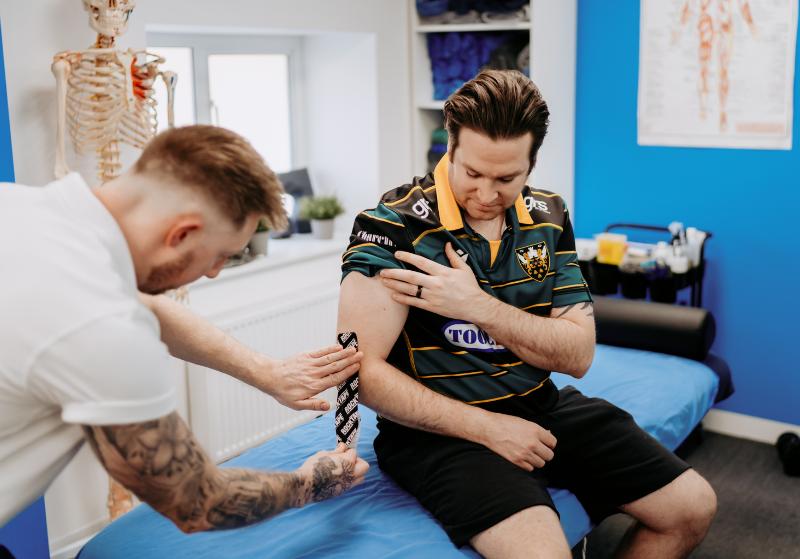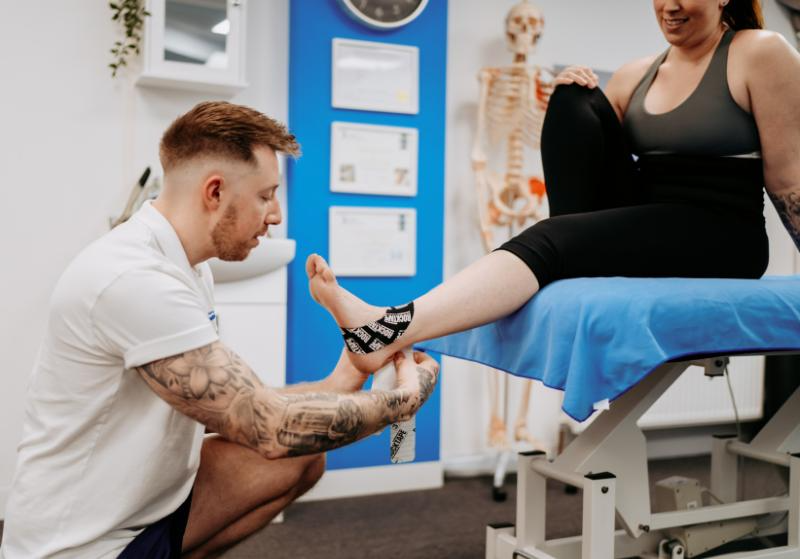Sports & Injury Strapping
The principles behind Injury Strapping & Sports Taping is to provide extra support to injured or vulnerable areas of the body, enabling athletes to continue performing with minimum pain or discomfort. By applying adhesive tape and bandages to secure joints, ligaments, and muscles in specific positions, helps prevent movement and reduces stress on weakened areas.
Additionally, this approach serves as an effective tool for rehabilitating injuries during their acute recovery phase.
Kinesiology Taping
Kinesiology tape, also known as Kinesio tape or K tape, is a thin, flexible, and elastic tape that is non-medicated and latex-free – making it friendly on the skin! Its purpose is to offer support and stability to muscles and joints without restricting range of motion. Additionally, it aims to reduce pain and discomfort, while facilitating a healing response and aids with recovery from injury. Kinesiology tape can be used to enhance healing processes, by increasing lymphatic drainage and blood flow, therefore reducing inflammation, swelling, and bruising. When applied correctly it should last multiple days and withstand athletic activity and showering without coming off.
Kinesiology Taping FAQ’s
In safe hands from day one…
“I highly recommend Luke. I personally have a complicated history of injuries and don’t always feel confident in putting my trust in a therapist, but I can honestly say my massage was fantastic, totally tailored to my needs. I will definitely be going back very soon for another session.”
Nicki Crockett • Enfield









